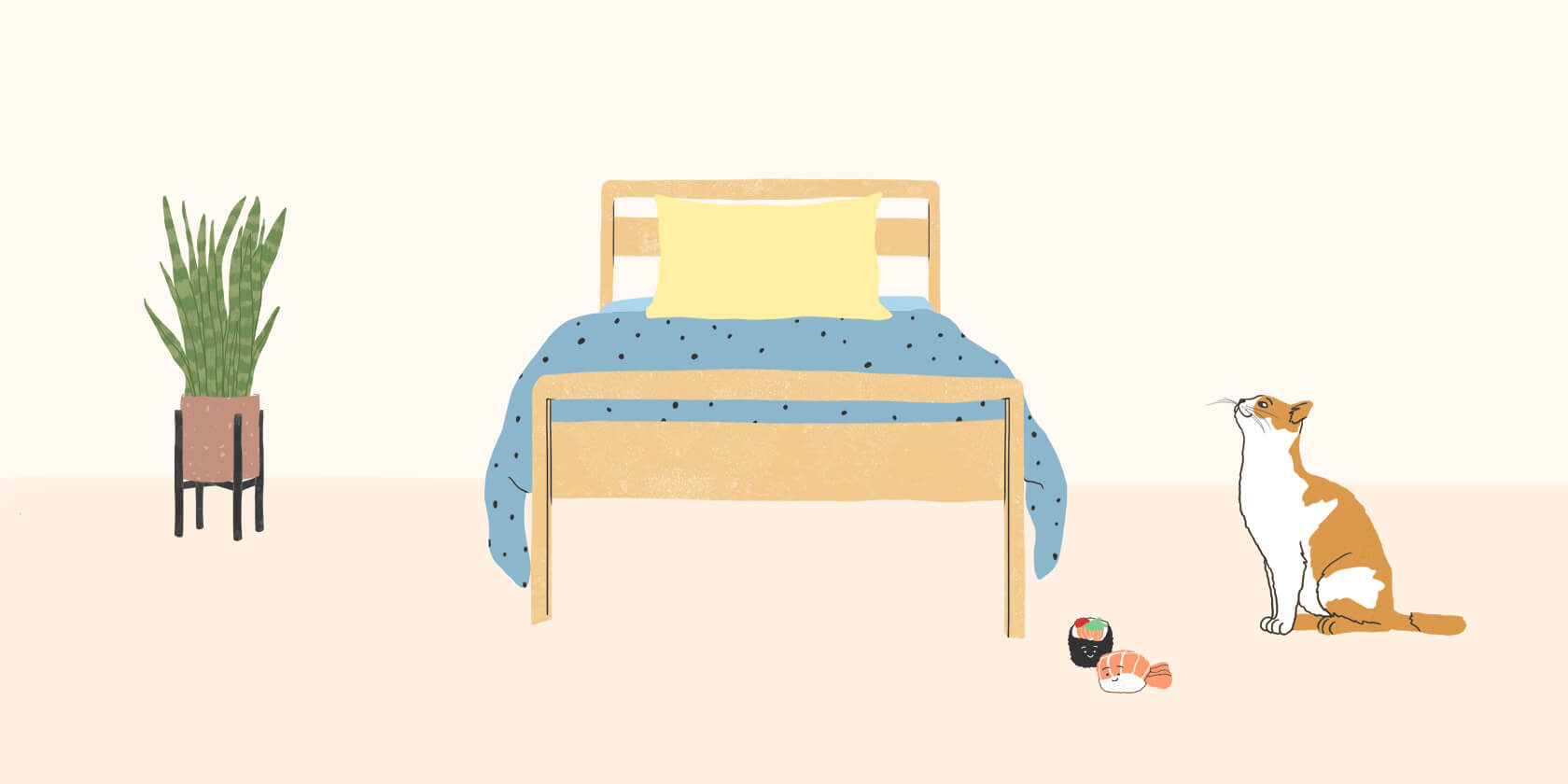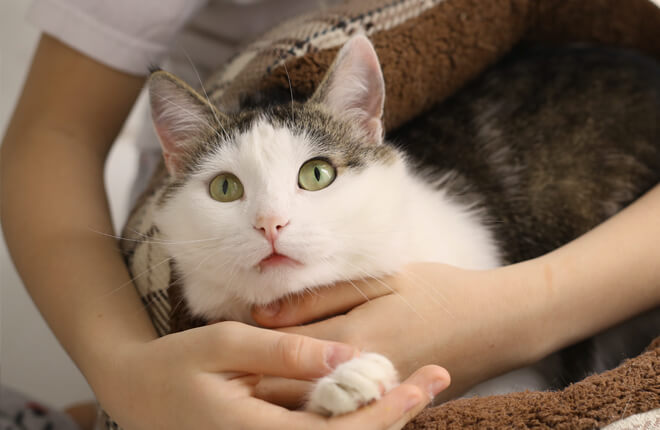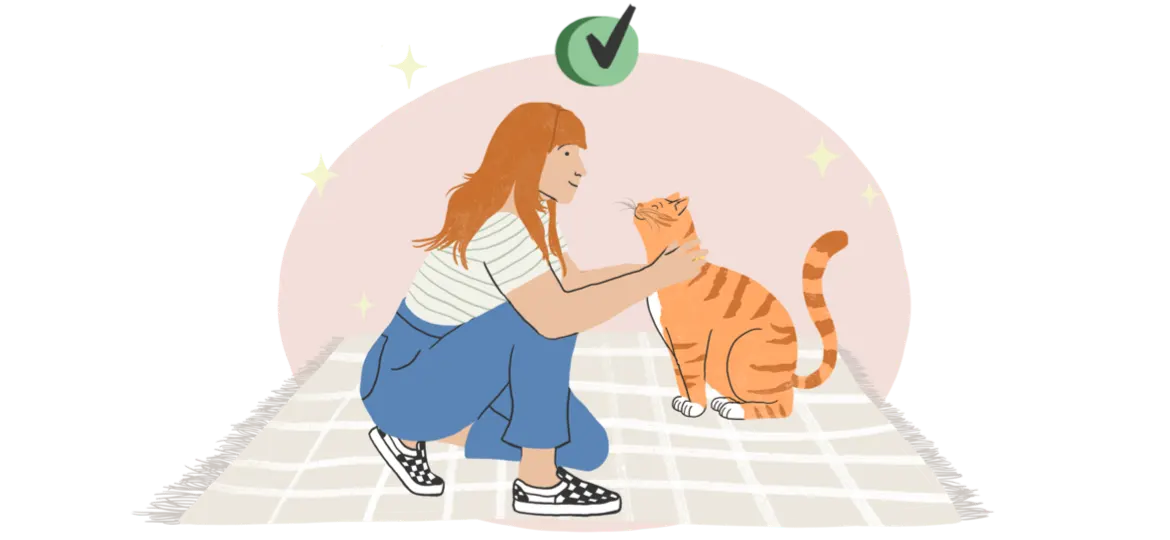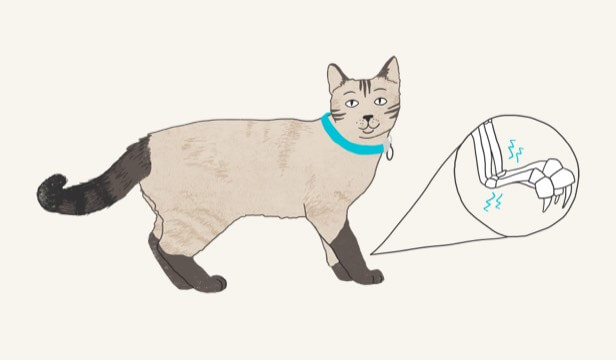If your cat is moving slower or not engaging in activities that they once enjoyed, they may be suffering from osteoarthritis (OA). OA is a common and painful condition, with nearly 40% of all cats showing clinical signs of it[1]. Although it’s more common in feline seniors, even cats as young as two years old can suffer from osteoarthritis[2].
If your cat is suffering from OA, things like using a litter box, jumping up to look out the window, or jumping off the counter can be very painful. Thankfully, there are ways to help manage their pain and improve their quality of life.

Helping your cat begins by talking with your veterinarian to determine if your cat has OA. Once diagnosed, the next step is to work with your veterinarian to come up with a treatment plan to help relieve your cat’s pain. In addition to supplement and pain medications like injectable pain medication for cats, there are some small changes you can make in your home, as well as at-home therapies you can use, to help your cat be more comfortable – allowing you both to better enjoy your life together.
Environmental Modifications to Help Arthritic Cats
Accessible litter boxes. Providing accessible litter boxes is essential for comfortable living for all cats, but it is crucial for cats with arthritis. Joint pain caused by osteoarthritis can limit mobility, and it is not uncommon for these cats to have “accidents” outside of the box simply because it hurts to use it. Here are a few ways you can help to keep your cat’s litter box accessible:
- Easy entry and exit. Many commercial litter boxes can be too tall for arthritic cats to climb in and out of. When shopping for a litter box for a cat with arthritis, look for boxes with at least one side low enough for your cat to easily step into and out of without having to jump (think three inches or less). Another option is to cut a notch into one side of an existing litter pan to create a lower entry point.
- Larger is better. A litter box should be wide enough so your cat can turn around inside it without touching the walls since this can cause pain in arthritic cats. A good choice is a DIY litter box that has three taller sides, is larger than most commercial litter boxes, and has an opening that can be cut on the front side to a size that works best for your cat.
- Additional litter boxes. At a minimum, you should have one more litter box than the number of cats in your household and one litter box for every level of your house. However, for cats with osteoarthritis, you may need to add even more, making it easier for your arthritic cat to get to a litter box in time. Set up multiple litter boxes around the home, especially in the area or floor of the house that your arthritic cat frequents.
- Consistent locations. Changing the location of the litter box or rearranging the furniture may disorient your cat, making it more difficult for them to find their way to the litter box. To prevent confusion, keep the litter boxes in the same place.
- Easy access to necessities and favorite locations. Aching joints caused by osteoarthritis make it tougher to reach spots that your cat used to with the prowess of a skilled acrobat. Therefore, special consideration needs to be given to the locations of necessities like food and water bowls, beds, and toys.
- Easy access to food and water. Place these items in an area where your cat will not have to jump, climb, or maneuver challenging slopes like stairs to the basement. Similar to litter boxes, keep them in the same place to prevent confusion about their location.
- Easy access to litter box(es). Place your cat’s litter box in an accessible location to make sure they don’t have to go up or down stairs to get to it.
- Easy access to elevated spaces. Is one of your cat’s favorite things snuggling next to you on the bed for a good night’s slumber? Osteoarthritis does not need to interfere with this heartwarming activity. Installing a ramp or steps to your bed will allow you and your cat to continue with your snuggle fests and a good night’s sleep. Just make sure the ramp or steps are not too steep or slippery for your cat.
The same can be done for your cat’s favorite elevated areas. If they have a treasured window perch where they like to watch the birds outside, place a ramp or steps to the perch so they can continue to take in the pursuits of wildlife that captures their eye.
- Slip-resistant surfaces. Many cats with osteoarthritis have difficulty stabilizing themselves on slippery surfaces like vinyl, tile, or hardwood, so adding slip-resistant surfaces to your home helps your cat feel more secure when walking. Some common slip-resistant surfaces to add to your home are carpet treads on wood stairs, area rugs or runners, or even yoga mats.
Cats suffering from muscle weakness and decreased coordination may drag their feet and get tripped up on rugs that curl up. To reduce this risk, you can put adhesive strips under the corners of a rug to make them lie flat and use a non-slip pad underneath to help them stay in place.
- Supportive bedding. As your cat ages, the type of bed they use starts to matter even more. A supportive orthopedic bed or one made from memory foam helps to support and cushion their joints while they rest. Your cat’s discomfort can increase in cold weather, so providing them a warm, comfortable sleeping area can help lessen their pain. A heated bed is often wonderfully welcomed by cats with OA pain. There are several on the market and it is vital that you only use beds or pads that have been approved for use in pets. Using a heating pad that is made for humans can cause serious burns.
Home Care Therapy to Help Arthritic Cats
Grooming. If your cat is unable to maintain their typical appearance, some help with brushing, cleaning, and clipping nails may be needed. Cats with arthritis often have overgrown claws because they stop using scratching posts or cannot reach the nails to groom them. Regular nail trims help keep their nails short and minimize the pressure on your cat’s feet. It also prevents your cat’s nails from growing so long that they make walking hurt or cause a limp. Don’t forget to trim dewclaws, which can grow into their skin and cause infection.
Grooming is also a great way to interact with your cat – reinforcing that incredible bond between the two of you.
Massage. Who doesn’t enjoy the feel of hands gently massaging sore muscles and joints, and the relaxation that ensues? Cats are no different and when done correctly, gentle handling may help your arthritic cat be more comfortable.
Therapeutic massage is the manipulation of the body’s soft tissues using specific techniques like holding, movement of tissue, and application of pressure. The purpose is for the treatment of body stress or pain. Although formal, full-body massage is best performed by a trained professional, elements of performing massage on your cat can be demonstrated and taught to you so that you can perform it at home. Reach out to your veterinary healthcare team for recommendations.
Learning and performing the techniques of cat massage for arthritis not only helps your cat’s pain, interacting with them in this intimate and healing way expands and strengthens the bond with your cat.
Mental stimulation. Although data is lacking on the effects of cognitive enrichment on chronic pain in cats, strategies to provide mental stimulation such as environmental enrichment, including play sessions, are strongly recommended[3]. Providing opportunities for play, especially those that mimic predatory behavior, like moving a rod with a rodent toy on the end and allowing your cat to “capture” their prey, are natural ways of providing your cat with intellectual nourishment and physical exercise.
ZPC-00868
IMPORTANT SAFETY INFORMATION: For use in cats only. Women who are pregnant, trying to conceive or breastfeeding should take extreme care to avoid self-injection. Allergic reactions, including anaphylaxis, could potentially occur with self-injection. SOLENSIA should not be used in breeding cats or in pregnant or lactating queens. SOLENSIA should not be administered to cats with a known allergy to frunevetmab. The most common adverse events reported in a clinical study were vomiting and injection site pain. Solensia may be associated with scabbing of the head and neck, dermatitis, and pruritus. See full Prescribing Information.
INDICATION: For the control of pain associated with osteoarthritis in cats.
- Enomoto, M., et al. (2019) Anti-nerve growth factor monoclonal antibodies for the control of pain in dogs and cats. Veterinary Record 184, 23.
- Lascelles BD, et al. Cross-sectional study of the prevalence of radiographic degenerative joint disease in domesticated cats. Vet Surg. 2010;39(5):535-544
- Ellis SLH, Rodan I, Carney HC, et al. AAFP and ISFM feline environmental needs guidelines. J Feline Med Surg 2013; 15:219–230.





